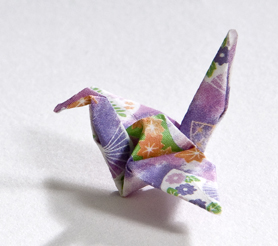Treatment for high grade astrocytomas involves a combination of surgery, chemotherapy and radiation therapy (RT):
Surgery
High grade astrocytomas are resected whenever possible.
The degree of tumor resection is the most important clinical prognostic factor. Sub-total resection is associated with a higher recurrence rate.
In the Children's Cancer Group (CCG) study CCG-945, the 5 yr progression-free survival (PFS) was 19% ± 3% after gross total resection (GTR). Those who did not have a GTR had a 5 year PFS of 11% ± 4%.
Chemotherapy
Adjuvant chemotherapy is typically added to surgery and RT.
The CCG study CCG-943 demonstrated a superior 5y PFS (46%) in children who received RT and adjuvant chemotherapy (prednisone, CCNU and vincristine) compared to those patients who received RT alone (18%).
The CCG study CCG-945 compared prednisone, CCNU and vincristine with an “8 in 1” regimen and found no statistical difference with 5y PFS rates of 35%. This study did document the favorable prognostic factor of extent of surgical resection.
One of the most important findings from CCG-945 was the observation of the unfavorable prognostic significance of mutation of the TP53 gene and/or over expression of the p53 protein in childhood malignant gliomas.
A recent phase II COG study, ACNS0126, investigated the use of temozolomide, a DNA methylating agent, given concurrently with RT in children with high grade astrocytomas after surgical resection.
Preliminary results for ACNS0126 suggest that outcomes do not significantly differ from historical controls (CCG-945) with event free survival 37% at one year.
Mechanisms of resistance to temozolomide may include O6-alkylguanine alkyltransferase (AGT) which restores DNA to intact state after exposure to chlorethylateing and methylating agents, such as procarbazine, temozolamide and nitrosureas. AGT is often over expressed in malignant gliomas and this may correlate with worse clinical outcome.
The Pediatric Brain Tumor Consortium is investigating the use of temozolomide in combination with O6-benzylguanine, (O6-BG) which may overcome temozolamide resistance mediated by AGT.
High dose chemotherapy and autologous stem cell rescue may have a role for some patients, although treatment related toxicity is significant.
Radiation therapy
RT is always given post-operatively and improves local control and disease free survival after resection.
RT Guidelines for high grade glioma
- A mask is made for immobilization and the placing of reference marks.
- CT scan for RT planning is then done with the patient in the mask.
- Fusion image registration software is used to identify GTV on MR and transfer that image to the CT planning scan.
- A typical total dose would be 59.4 Gy in 180 cGy fractions (33 fractions in total) using a combination of a larger initial field to encompass the original extent of disease followed by a boost field focusing on any areas of possible residual disease.
- Contrast-enhanced pre and post op MRI used to define clinical target volumes.
- Fusion image registration software is used to identify GTV.
Different treatment volumes are defined:
GTV = Gross tumor volume = All areas of enhancement seen on a PREoperative MR scan .
CTV = Clinical target volume. Which is the GTV expanded to cover any areas of microscopic disease extension
If there is a boost – then there is an initial larger CTV1 and then treatment focuses in on a smaller boost CTV2.
PTV = Planning target volume = Volume further expanded to cover any amount of variability in set up.
CTV-1 = GTV (all enhancing areas of brain tissue on pre-operative T1 enhanced MRI study) + 2 cm margin in all directions.
Planning target volume 1 = PTV1 = CTV-1 + a 0.3 to 0.5 cm margin
CTV-2 =External Beam Boost.
Enhancing residual tumor seen on T1 POSToperative MR + a 1 cm margin.
Planning target volume 2 = PTV-2 = CTV-2 + a 0.3 to 0.5 cm margin.
The current COG study for newly diagnosed high grade glioma is ACNS0822. This is a randomized phase II/III Study between 3 study arms:
- Local RT plus Vorinostat
- Local RT plus Temozolomide
- Local RT plus Bevacizumab
Followed by maintenance chemotherapy with Bevacizumab and Temozolomide.
Heavy Particle Beam Radiation Therapy:
Neutron therapy was used historically – but there was no increase in survival compared to fractionated photon external beam radiation therapy. While it could induce tumor stabilization, this was at the expense of extensive radiation necrosis. The use of charged particles has the same theoretical advantages of neutron therapy, but can be better targeted.
Link to opinion article on Heavy Particle beam neutron therapy
- Gamma knife and linear accelerator based systems can be used
- Both are able to deliver a single high dose of ionizing radiation to a small target with a sharp dose fall-off
- Allows sparing of surrounding normal tissues
- This technique is often used to treat metastatic disease, but can be used as a boost for glioblastoma multiforme postoperatively, in addition to conventional focal external beam radiation
- Dose levels for children are similar to those used in adults
External Link:
Treatment of Childhood High–Grade Astrocytomas at the NCI

